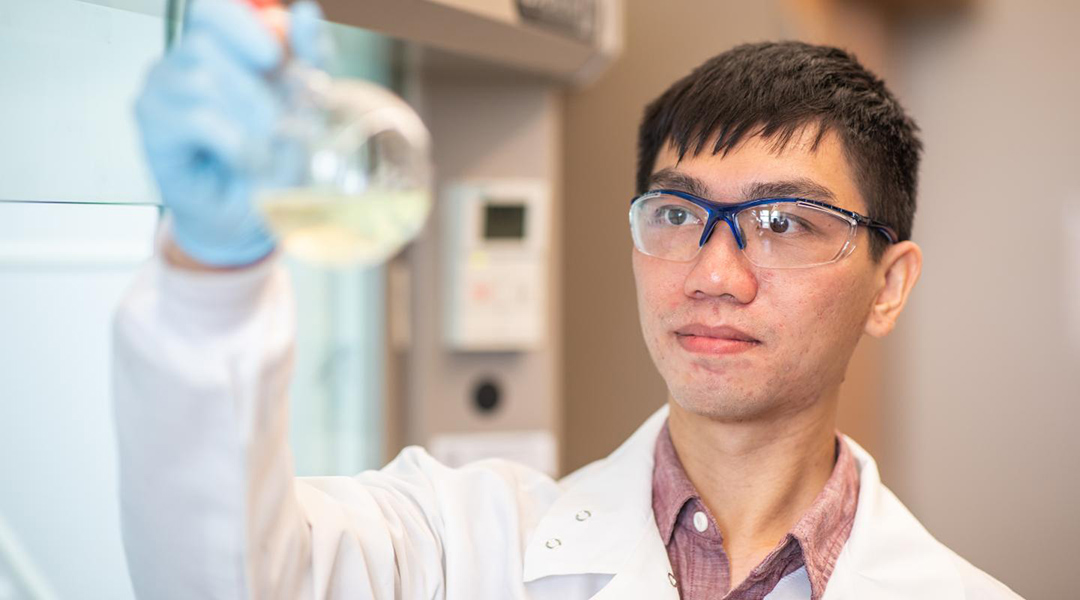Graduate student Patrick Lee (pictured) is working to develop new light-responsive hydrogel. Image credit: Texas A&M Engineering
Hydrogels are commonly used inside the body to help in tissue regeneration and drug delivery. However, once inside, they can be challenging to control. A team of researchers led by Professor Akhilesh Gaharwar of Texas A&M University is developing a new way to manipulate the gel — by using light.
Light is a particularly attractive source of energy as it can be confined to a predefined area as well as be fine-tuned by the time or intensity of light exposure. Light-responsive hydrogels are an emerging class of materials used for developing noninvasive, noncontact, precise, and controllable medical devices in a wide range of biomedical applications, including photothermal therapy, photodynamic therapy, drug delivery, and regenerative medicine.
Patrick Lee, one of the study’s authors, said light-responsive biomaterials are often used in biomedical applications; however, current light sources, such as ultraviolet light and visible light, cannot sufficiently penetrate the tissue to interact with the hydrogel. Instead, the team is researching near-infrared (NIR) light, which has a higher penetration depth.
The team is using a new class of two-dimensional nanomaterials known as molybdenum disulfide (MoS2), which has shown negligible toxicity to cells and superior NIR absorption. These nanosheets with high photothermal conversion efficiency can absorb and convert NIR light to heat, which can be developed to control thermoresponsive materials. Their work was recently published in the journal Advanced Materials.
In one of the group’s previous studies, certain polymers were shown to react with MoS2 nanosheets to form hydrogels. Building on this discovery, the team further utilized MoS2 nanosheets and thermoresponsive polymers to control the hydrogel under NIR light by photothermal effect.
“This work leverages light to activate the dynamic polymer-nanomaterials interactions,” Gaharwar said. “Upon NIR exposure, MoS2 acts as a crosslink epicenter by connecting with multiple polymeric chains via defect-driven click chemistry, which is unique.”
NIR light allows internal formation of therapeutic hydrogels in the body for precise drug delivery. For cancer therapy, most of the drugs can be retained within the tumor, which will ease the side effects of chemotherapy. Moreover, NIR light can generate heat inside the tumors to ablate cancer cells, known as photothermal therapy. Therefore, a synergetic combination of photothermal therapy and chemotherapy has shown a higher efficacy in destroying cancer cells.
Reference: Hung Pang Lee, et al., Light-Triggered In Situ Gelation of Hydrogels using 2D Molybdenum Disulfide (MoS2) Nanoassemblies as Crosslink Epicenter, Advanced Materials (2021). DOI: 10.1002/adma.202101238

















